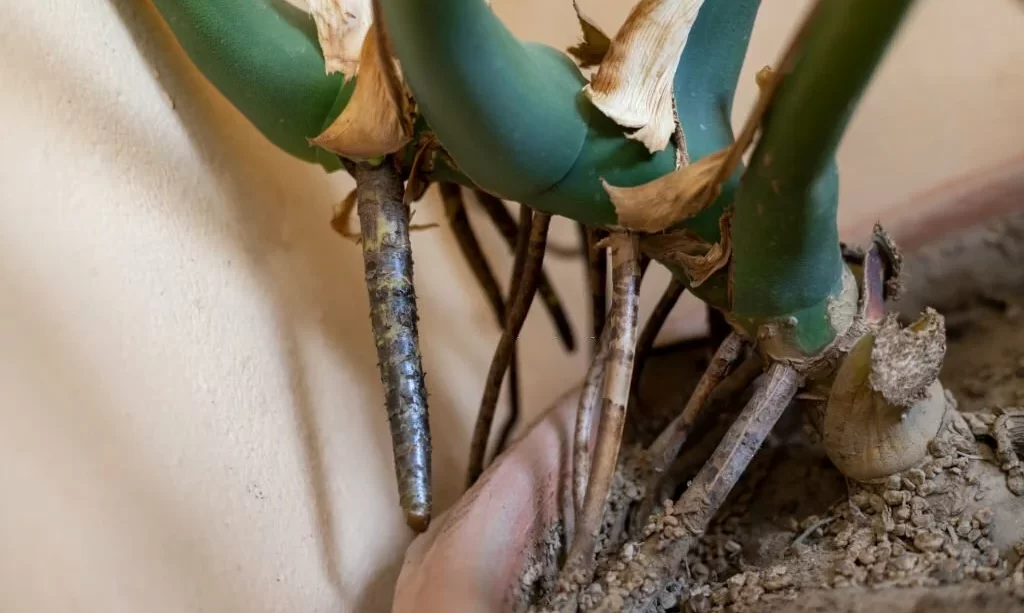Enter the lush world of indoor gardening, where Monstera plants stand as iconic figures, captivating enthusiasts with their distinctive split leaves and unrivaled beauty. In the realm of caring for these green companions, a question lingers: Do Monsteras, known for their vigor and adaptability, thrive in the confined quarters of root-bound conditions?
- OPTIMIZED BLEND: NPK Ratio featuring a balanced 5-2-3 NPK (Nitrogen, Phosphorus, Potassium) formula. Perfect for your monstera houseplant. This liquid fertilizer is expertly tailored to support robust growth and vibrant foliage in Monsteras, Pothos, and Snake Plants.
- PROMOTES STRONG ROOT DEVELOPMENT: Our advanced formula penetrates deep into the soil, delivering essential nutrients directly to the roots, enhancing water uptake and overall plant resilience against environmental stressors.
- EASY-TO-USE LIQUID FORMULA: Designed for convenience, this liquid fertilizer can be easily mixed with water for hassle-free application, ensuring your plants receive the right amount of nutrients with each watering. The concentrated liquid easily dissolves in water, creating a perfectly balanced nutrient solution that evenly distributes essential minerals throughout the soil, providing consistent nourishment with every watering cycle.
- SAFE AND GENTLE FOR FREQUENT USE: Our gentle organic formula is designed to be safe for regular use, providing continuous nutrition without the risk of burning your plants. Ideal for maintaining lush, healthy monstera houseplants all year round.
- ECONOMICAL AND LONG-LASTING: A little goes a long way with our 8 oz bottle, making it a cost-effective solution for Monstera plant enthusiasts. Its concentrated formula means you only need a small amount for each application, lasting you through many watering cycles.
Monstera Marvels
The Monstera, with its sprawling vines and striking foliage, has emerged as a marvel in the realm of indoor plants. Its unique leaves, featuring captivating splits and perforations, contribute to its popularity as a choice for interior decor. As these plants grace living spaces with their tropical allure, indoor gardeners find themselves intrigued by the diverse expressions of growth and resilience exhibited by different Monsteras.
Root Bound Conditions
To unravel the mystery of whether Monsteras favor being root bound, it’s essential to comprehend the concept of root-bound conditions. This occurs when a plant’s roots outgrow the confines of its container, creating a densely packed root system. As we delve into the question at hand, exploring how Monsteras interact with their root environment becomes a crucial aspect of understanding their preferences and overall well-being.
Monstera’s Root Preferences
To decipher whether Monsteras find comfort in root-bound conditions, we turn our attention to the plant’s native habitat. In their natural environments, Monsteras often contend with limited space for root expansion. This adaptability to confined root spaces is a key facet of their growth tendencies. Understanding the plant’s root preferences in its native surroundings sheds light on whether the snug embrace of a container aligns with the Monstera’s natural inclinations.
Benefits of Root Bound Environments for Monsteras
Exploring the potential advantages of maintaining Monsteras in root-bound conditions unveils intriguing insights. In these compact spaces, Monsteras may channel their energy towards robust foliage growth. The limited root space could encourage the plant to invest in lush leaves, potentially leading to a more vibrant and healthy appearance. Observing whether these conditions positively influence flowering and overall plant vitality helps gauge the potential benefits of a root-bound environment for Monsteras.
Signs of a Happy Root-Bound Monstera
Indicators of a content and thriving Monstera in root-bound conditions become the gardener’s guide. Lush foliage, consistent growth patterns, and signs of flowering serve as telltale signs of a happy Monstera. These visual cues provide valuable insights into whether the plant is adapting well to its confined root space. Understanding and interpreting these signs empower indoor gardeners to nurture their Monsteras in a way that aligns with the plant’s preferences for root-bound environments.
Mitigating Risks of Root Bound Conditions
While the snug embrace of root-bound conditions may offer advantages, it’s crucial to acknowledge potential risks. In such environments, the risk of nutrient depletion and restricted water absorption becomes a concern. To mitigate these challenges, prudent watering practices and a well-balanced fertilization regimen are essential. Gardening enthusiasts can navigate the potential pitfalls of root-bound conditions by providing their Monsteras with the necessary nutrients and moisture, ensuring the continued well-being of these vibrant houseplants.
Gardener’s Dilemma: To Repot or Not to Repot
As Monsteras flourish in their root-bound abode, a dilemma often plagues indoor gardeners: to repot or not to repot? Assessing the need for repotting involves considering factors such as stunted growth, visible roots, and overall plant health. This decision, while challenging, revolves around maintaining a delicate equilibrium between providing ample space for growth and allowing the Monstera to revel in the snug embrace of its container. Gardening enthusiasts must navigate this decision with care, ensuring the ongoing vitality of their green companions.
Conclusion
In the intricate dance between Monsteras and root-bound conditions, the conclusion emerges as a nuanced appreciation for the adaptability of these resilient plants. While the benefits of limited root space may be evident in vibrant foliage and contented growth, it’s essential for gardeners to remain vigilant to potential risks. Striking a balance between observing signs of plant happiness and mitigating challenges ensures a harmonious relationship between Monsteras and their container homes. As indoor gardeners continue to nurture these iconic plants, the enigma of whether Monsteras thrive in root-bound conditions adds a layer of intrigue to the dynamic world of plant care.




